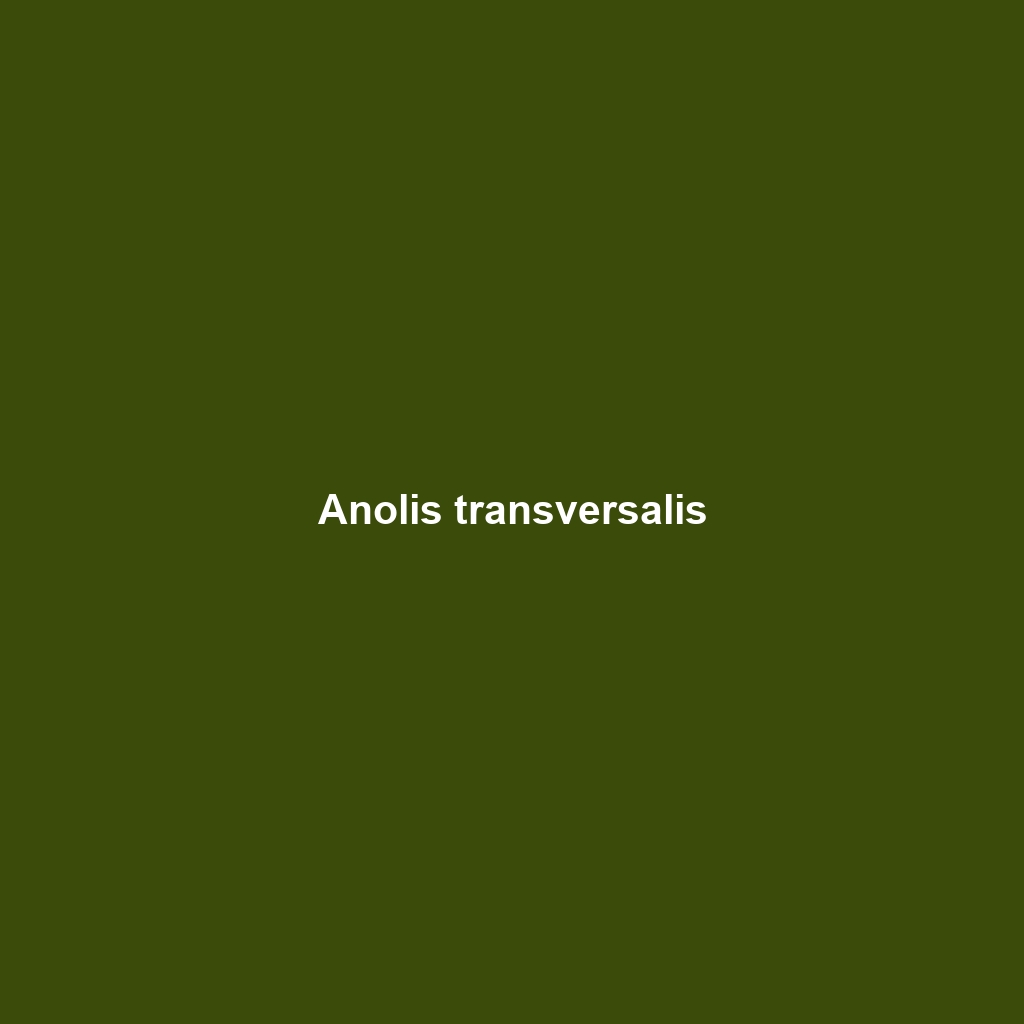Anolis transversalis: A Comprehensive Species Description
Common Name: Anolis transversalis
Scientific Name: Anolis transversalis
Habitat
Anolis transversalis is primarily found in the tropical and subtropical regions of Central America and parts of South America, notably in countries such as Costa Rica, Panama, and Colombia. This species thrives in a variety of habitats including rainforests, mangroves, and woodlands, preferring areas with abundant foliage and appropriate microclimates that offer both sun and shade.
Physical Characteristics
The Anolis transversalis is a medium-sized lizard, typically measuring between 4 to 6 inches in total length. Its distinctive features include bright green or brown coloration, which allows for excellent camouflage in its leafy surroundings. A prominent characteristic is its flattened, elongated body and long, slender limbs, making it agile and adept at navigating through its arboreal habitat. Male specimens are often larger than females and exhibit vibrant throat dewlaps used during territorial displays.
Behavior
Anolis transversalis is diurnal, engaging in most of its activities during daylight hours. This species is known for its territorial behaviors, particularly in males, who often display their dewlaps while perch-holding to ward off rivals. They are also skilled climbers, spending considerable time basking and displaying on branches. Their agility and speed help them evade predation while also aiding in their hunting practices.
Diet
The diet of Anolis transversalis primarily consists of small insects and arthropods, including crickets, beetles, and ants. Their feeding habits involve active hunting and ambush techniques, where they rely on their coloration for camouflage before striking at unsuspecting prey. This insectivorous diet plays a crucial role in controlling insect populations within their ecosystems.
Reproduction
Anolis transversalis typically breeds during the wet season, which varies by geographic location. Males engage in competitive displays to attract females, who lay clutches of 1-4 eggs in moist, hidden locations. The eggs incubate for approximately 6 to 8 weeks, after which hatchlings emerge, fully independent and miniature replicas of adults.
Conservation Status
Currently, Anolis transversalis is classified as ‘Least Concern’ according to the IUCN Red List. However, the ongoing habitat destruction due to agriculture and urbanization poses potential threats to local populations. Continuous monitoring and conservation efforts are essential to ensure that this species remains stable in its natural environment.
Interesting Facts
– Anolis transversalis is known for its remarkable ability to change color slightly in response to environmental cues.
– The species can regenerate its tail if lost, a common survival trait among lizards.
– Their vocalizations are varied and can be used for communication between individuals.
Role in Ecosystem
Anolis transversalis plays a vital role in its ecosystem as both a predator and prey. By controlling insect populations, they contribute to the balance of the food web. Additionally, they serve as prey to larger predators, including birds and snakes, thus maintaining the ecological balance. Their presence indicates the health of their environment, making them important bioindicators.
